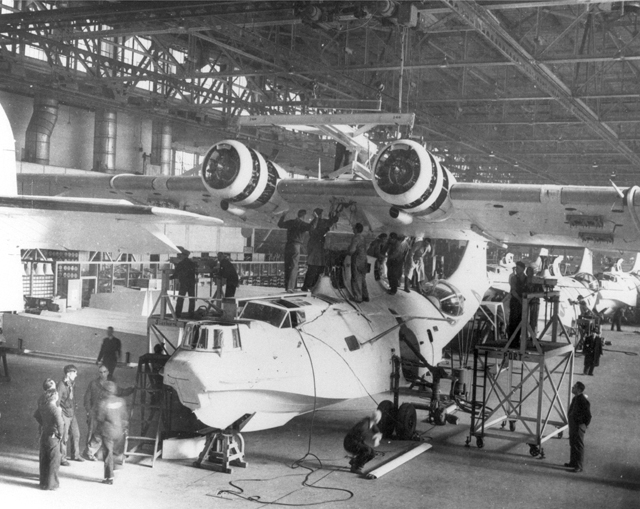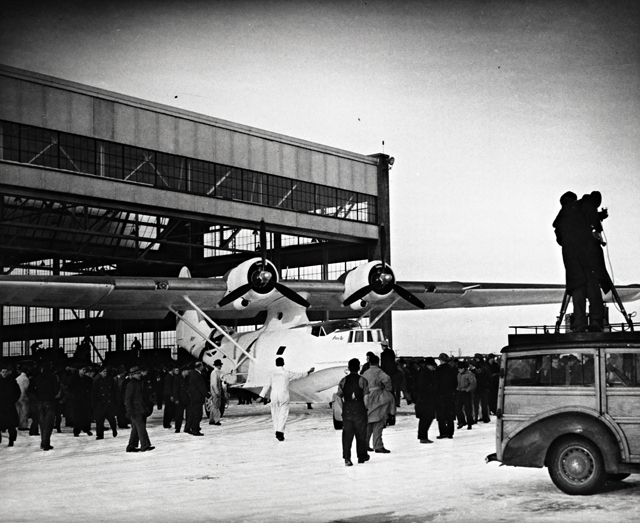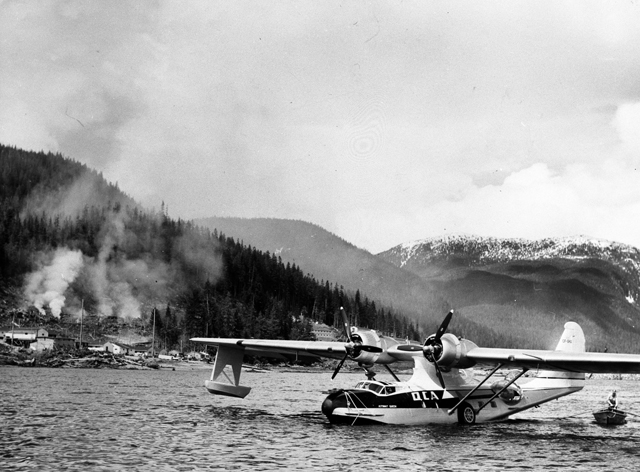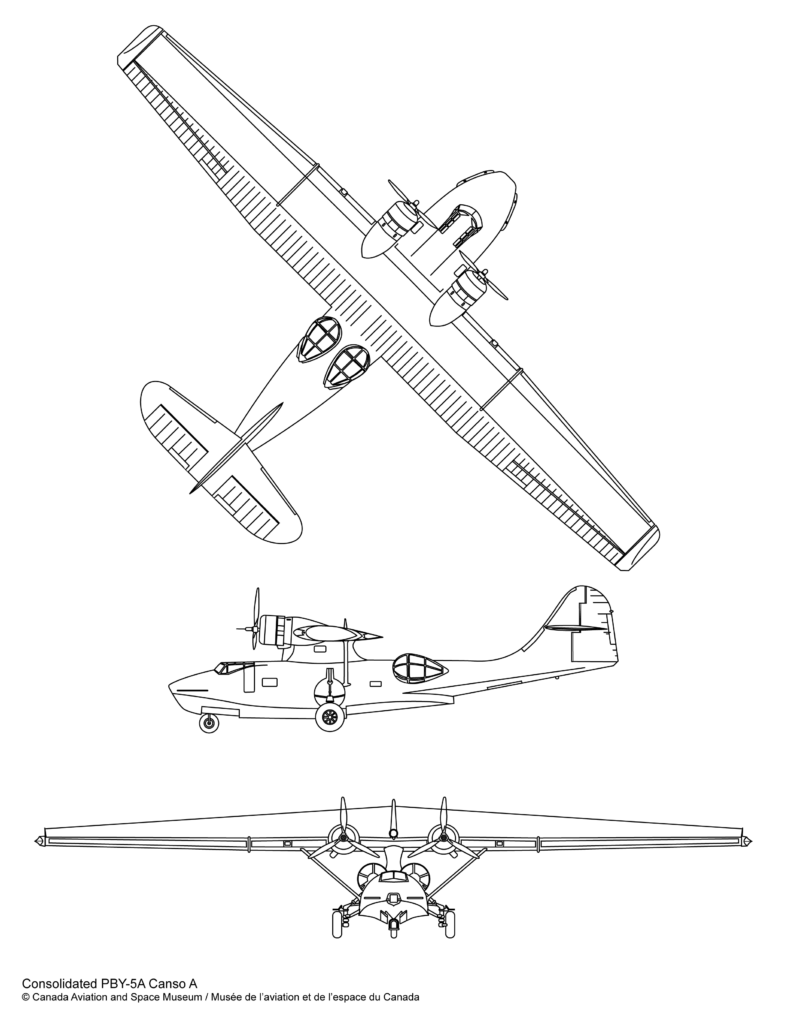Consolidated PBY-5A Canso A
Highlights
- A Canadian-made version of Consolidated PBY Catalina, American twin-engine, maritime patrol aircraft designed by Consolidated Aircraft Corporation, and produced between 1935 and 1945
- All Canadian Cansos were built by Boeing Aircraft of Canada in Vancouver, or Canadian Vickers Ltd. in Montreal
- The Canso A amphibious aircraft replaced the Supermarine Stranraer for the RCAF’s ocean patrols during the Second World War
- The Canso had the range and endurance needed to counter German submarines in the Atlantic
- RCAF Flight Lieutenant David E. Hornell posthumously won the Victoria Cross for attacking and sinking a German submarine in a Canso in June 1944
- RCAF Squadron Leader Leonard Birchall, the “Saviour of Ceylon”, foiled a Japanese attack on a Royal Navy Fleet in Ceylon (today’s Sri Lanka)
- Post-war Canso As served with the RCAF, as well as the Danish and Swedish air forces; others were converted for civilian use in photo reconnaissance, search-and-rescue operations, passenger service, water bombing, freight service, and aerial surveying
- First flight was in March 1933 (XP3Y-1)
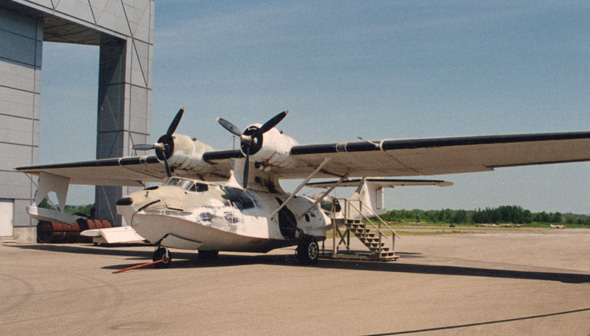
Artifact no.: 1967.0647
Manufacturer: Canadian Vickers Ltd.
Manufacturer location: Canada
Manufacture date: 1944
Acquisition date: 1964
Registration number: 11087 (RCAF)
History
Designed specifically for ocean patrol duties, the Canso amphibian had good range and endurance. All Canadian-operated Cansos were built in Canada, either by Boeing Aircraft of Canada or Canadian Vickers Ltd, and many were supplied to Canada’s allies. The Canso was a very successful anti-submarine patrol bomber during Second World War and continued in service with the RCAF until 1962. Many were sold after the war and some were still operating in the Canadian North in the early 1990s.
Even though its wing-tip floats retract for less drag when flying, the Canso is a slow flyer. Crews used to say that it took off, climbed, cruised, landed, stalled, all at 90 mph (150 km/h). In total, 3 431 were built in Canada, the United States, and Russia, more than any other flying boat. Flight Lieutenant D.E. Hornell posthumously won the Victoria Cross for attacking a submarine in a Canso.
Current location
Reserve hangar, Canada Aviation and Space Museum
Provenance
Transfer from the Royal Canadian Air Force
This Canso A was manufactured in 1944 by Canadian Vickers Ltd. in Montreal, and was delivered to the RCAF the same year, serving initially with Eastern Air Command. It was placed in storage in Mount Pleasant, Prince Edward Island, in 1945.
In December 1948, the aircraft was taken out of storage to serve on search-and-rescue operations. It was used by various units, from one end of the country to the other, between 1948 and 1961.
The Canso was retired in 1962. It was then refinished by the RCAF in the markings of Flight Lieutenant David Hornell’s aircraft of 162 Squadron, RCAF. It was transferred to the Museum by the RCAF in 1964.
Technical information
- Wing span
- 31.1 m (102 ft)
- Length
- 19.5 m (63 ft 10 1/2 in)
- Height
- 6.1 m (20 ft 2 in)
- Weight, empty
- 9,485 kg (20,910 lb)
- Weight, gross
- 15,411 kg (33,975 lb)
- Cruising speed
- 188 km/h (117 mph)
- Max speed
- 288 km/h (179 mph)
- Rate of climb
- 3,050 m (10,000 ft) / 19.3 min
- Service ceiling
- 6,100 m (20,000 ft)
- Range
- 4,090 km (2,540 mi)
- Power plant
- two Pratt & Whitney R-1830-92 Twin Wasp, 1,200 hp, radial engines
